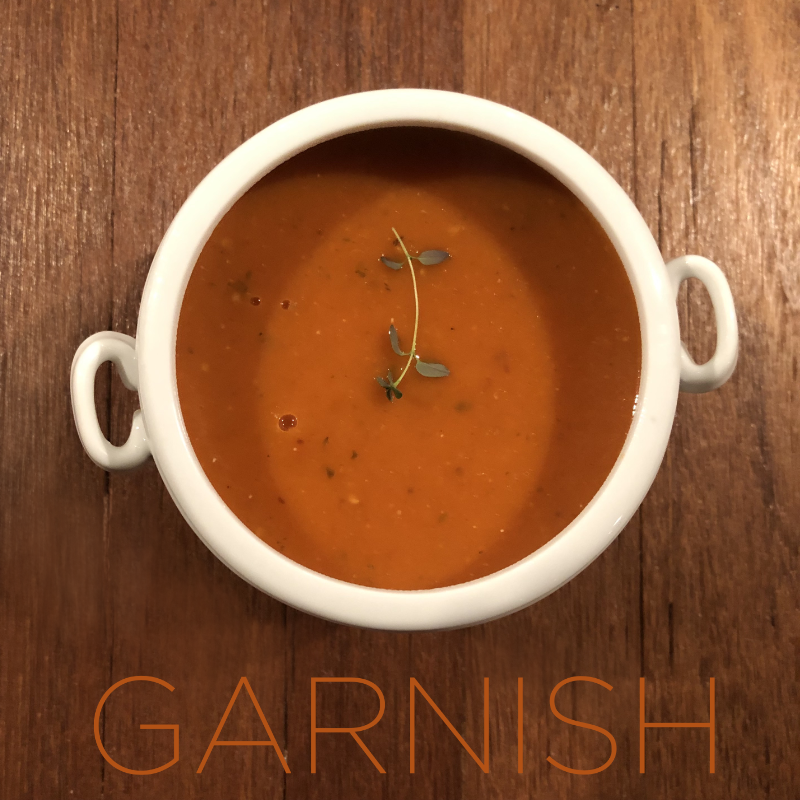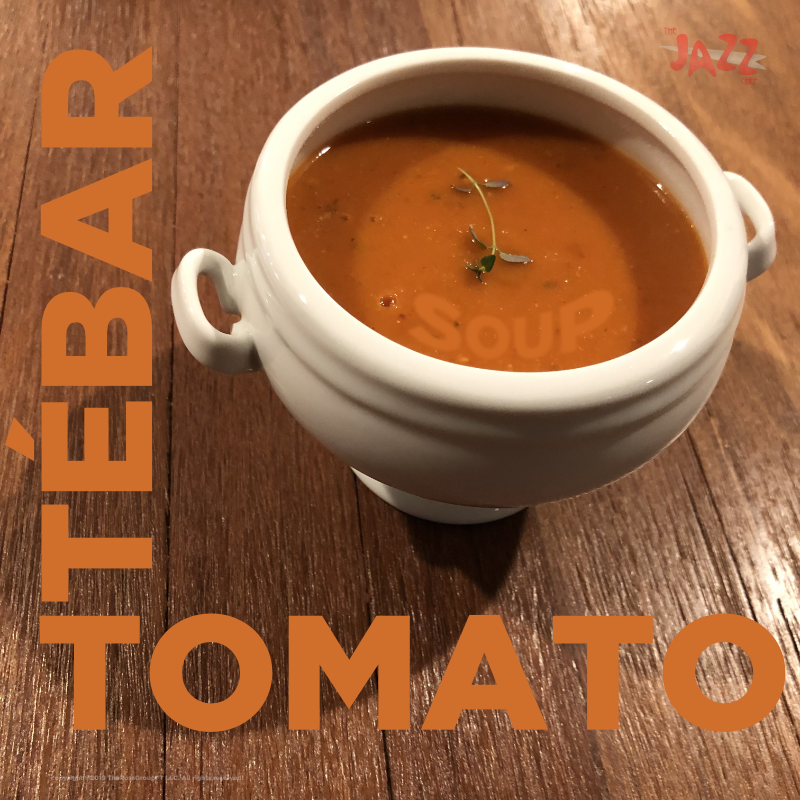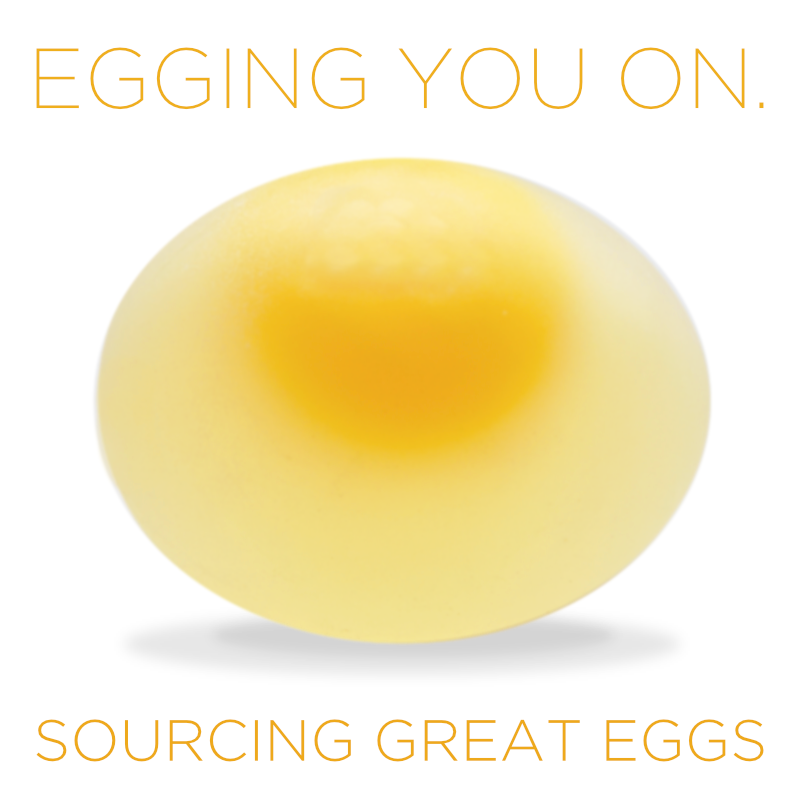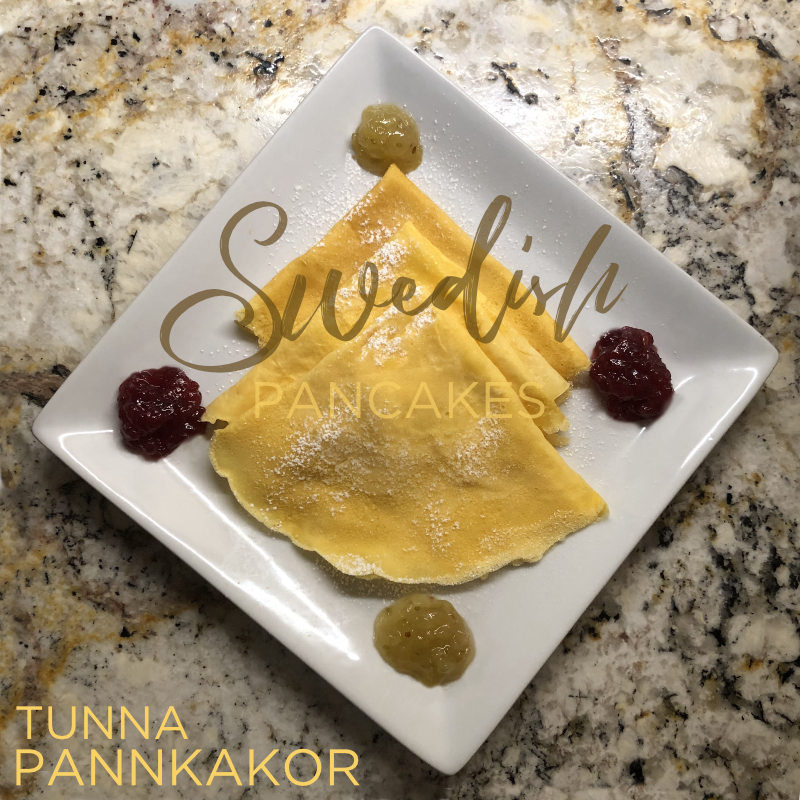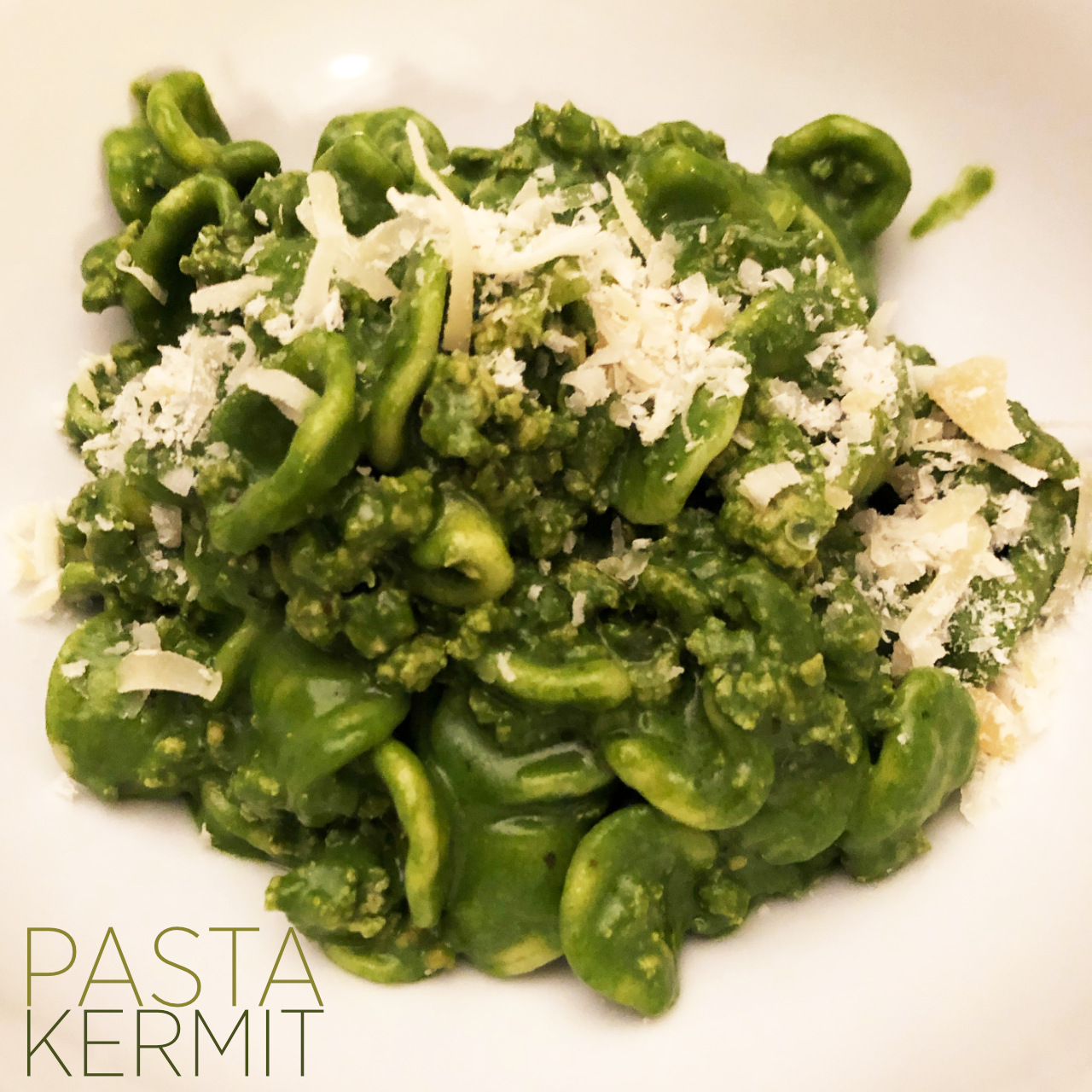THE COOK’S TOUR
Named for the always intriguing Spanish Jazz guitarist Ximo Tébar, this Iberian-influenced roasted tomato soup has two speeds. Served cold, my fave, it has one flavor palette with exotic, aromatic fenugreek leaf notes. Served hot, it has a warm, bright tomatoey goodness. It has more body than a gazpacho, and far more rich character than a can of Campbell’s classic.
It’s All About the Tomato
If you haven’t read my Tomato: A Love Story, check it out before you run out and buy a bag of mass-market meh tomatoes at the local super.
You are what you cook, reputation-wise, even with your family.
Those machine-picked, green-gets-gassed-gagworthy tomatoes of most North American markets look pretty, but taste… sh—-ty.
Sourcing great tomatoes makes a HUGE difference, like great steak, or poultry in this recipe, so start with the best tomatoes that you can find/afford.
The best? Home grown; vine-ripened. As long as they’ll hold on to the vine at home, they’ll be awesome.
Don’t grow your own? Find tomatoes from a local farm, farmer’s market, or organic store.
Still stuck to the Super? Beware “Vine ripened.” Just because they ship them with the stem doesn’t mean that it wasn’t picked green, and gassed later. The article will fill you in!
SERVES
10-12 small course; 6-8 meal-sized.
THE GEAR
- Ozeri Scale, set to metric. (Base 10 is both more accurate, and easier than all of that “How much is 1/4+ 2/3rds” stuff.)
- Large non-stick roasting pan, or baking tray with lipped sides, e.g. not a cookie sheet.
- Williams-Sonoma/Heston Nanobond™ 8 qt. pot, or equivalent;
- Cutting board;
- Global Santoku 5” Hollow Knife, or equivalent;
- All-Clad immersion blender (Pimer) (preferred), or blender.
- 3.785 l. / 4 qt. storage container or smaller containers for up to a gallon (Better for storing/freezing)
- Small tasting spoons;
- Silicone spatula
- Small tongs.
THE STUFF
- 15-20 ripe, medium farm or hydroponic tomatoes;
- 2 medium Vidalia (Sweet white or yellow) onions;
- 3-4 cloves of garlic, 12.7mm or 1/2” thick;
- 2-4 large fresh basil leaves;I love my Aerogarden hydroponics because it grows faster. I can grab fresh right off the plant without all of the soil mess too!
- 2.5 gr dried or fresh thyme leaves (no stems);
- 3-4 Fenugreek leaves (Ground/seed does not substitute)
- 2 gr/ 1.5 tbsp dried basil leaves
- 1 bay leaf;
- 1/2 tsp spanish smoked paprika
- 4 cups water;
- 1/4 cup heavy cream
- 4 slices day-old (mildly stale) standard loaf bread, or a med baguette, stale and sliced
- 5-10 fresh thyme sprigs, for garnish;
- 1 can Muir Glen Organic Tomato Paste, or 2 tbsp Spicejungle tomato powder
- 2 tbsp Sherpa Pink Himalayan salt;
- 1 tsp Datu Puti white cane sugar vinegar
THE STEPS
- Set the oven on ROAST (preferred) or BAKE to 200°c / 400°F. When it reaches temperature, grab your digital thermometer, quickly open it, and put your hand and probe into the middle of the oven, briefly, to get the read. If it’s off, adjust the temperature upward or downward a few degrees to compensate for the inaccuracies of your oven. You can just adjust, or, if you own it, have a technician come and recalibrate it, if it’s far off.
- Peel the garlic cloves and onions. Slice off a bit of the top and bottom of the onion. Put them on the tray;
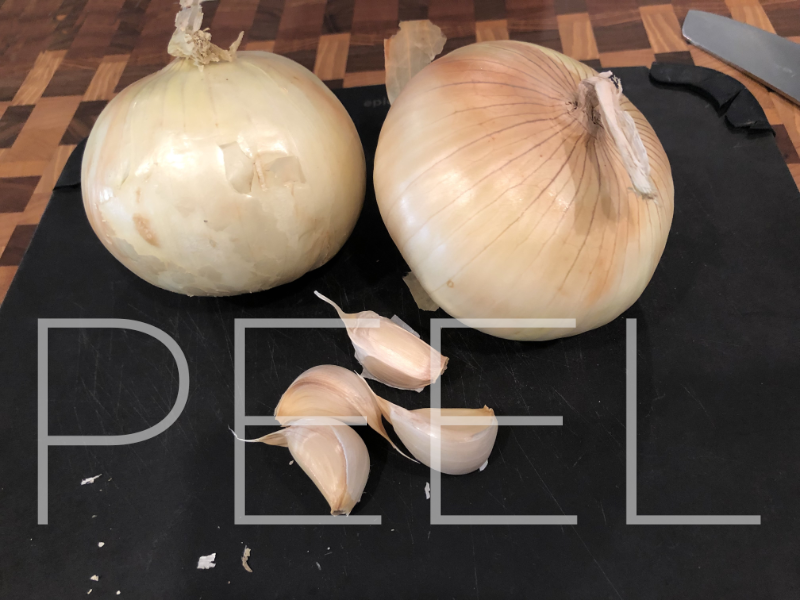
- Wash all of the tomatoes. Pull out your non-stick tray or roaster and put it on the counter. Put them on the tray with the onions and garlic, flipping them on to their stem-side as the “bottom.” Take a sharp knife and score an “X” into the top of each.
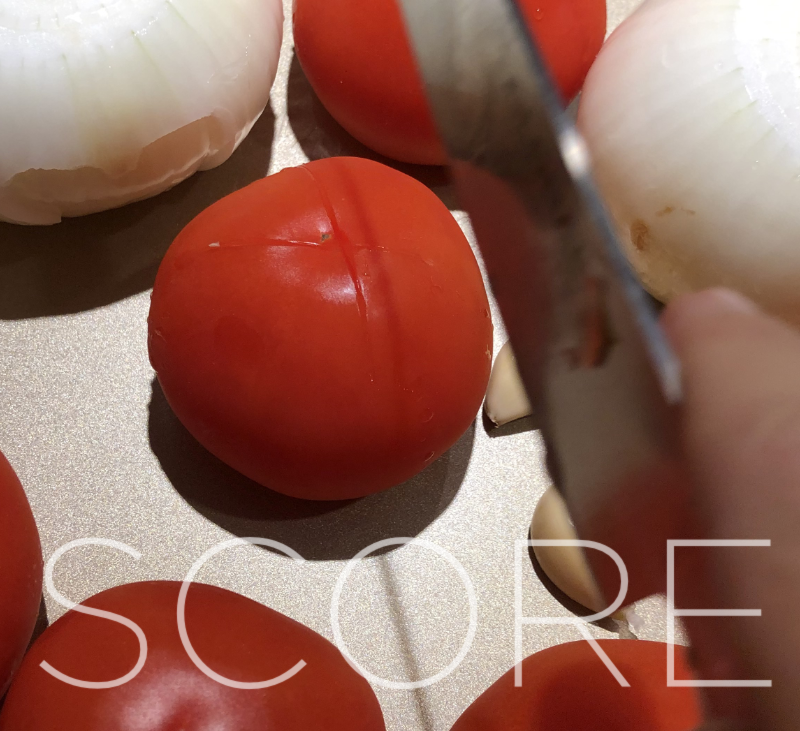
- Put the tray into the oven to begin the roasting.
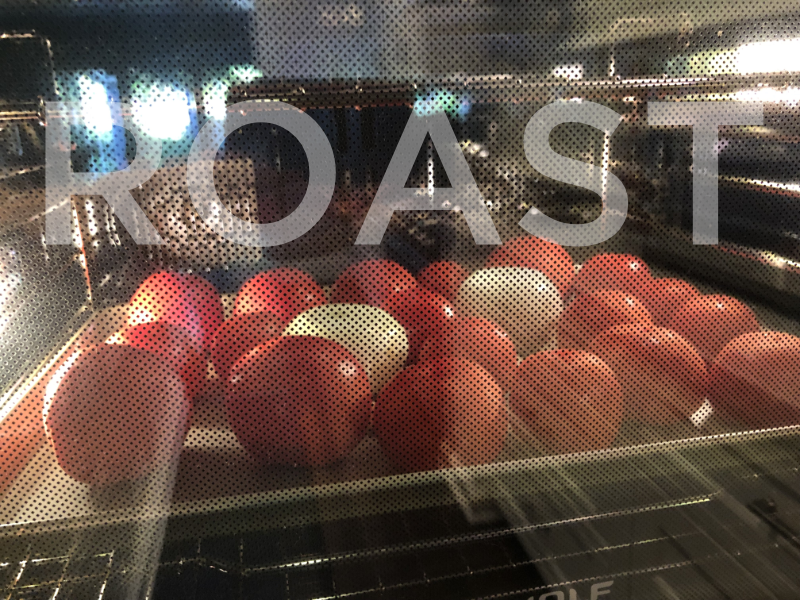
- Put the stock pot on the stovetop. Add the water. Set to medium-high heat and bring to a boil.
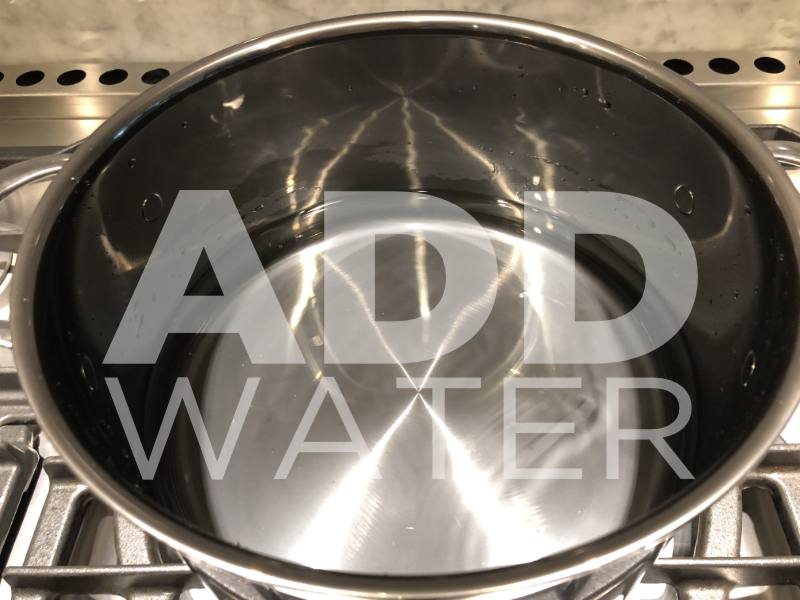
- Check your roast periodically for the garlic, but absolutely don’t let it go for more than 15 minutes. If you see the garlic begin to brown earlier, pull out the tray. Use the tongs remove the garlic cloves. Add to the stovetop pot. Reduce the heat on the pot to a simmer when it has boiled.
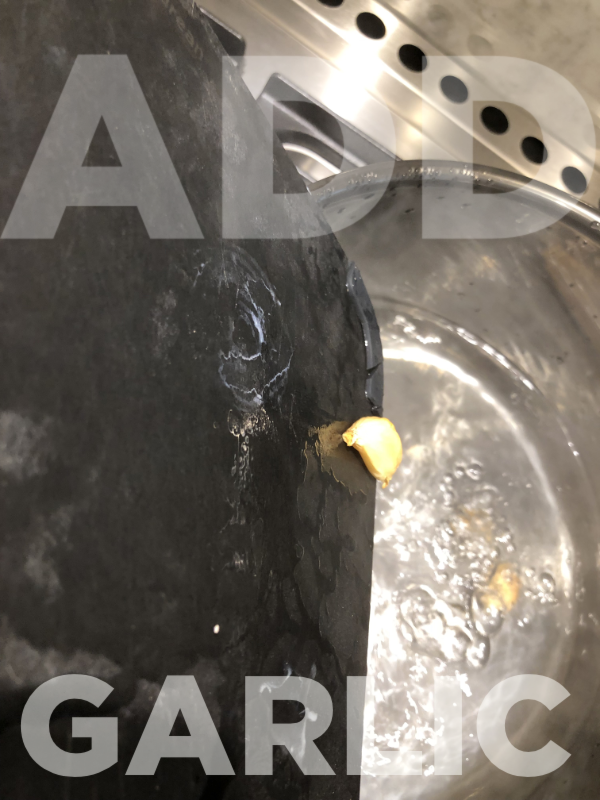
- Return the tray with the tomatoes and onions to the oven. Continue the ROAST for approximately 30 minutes, or until the skins are a bit wrinkly, as they’re pictured, below. A touch of char is okay on a couple near the edges, but don’t burn them, or it will impact the flavor. Remove from the oven, set next to your pot on heat-safe surface, and turn off the oven.
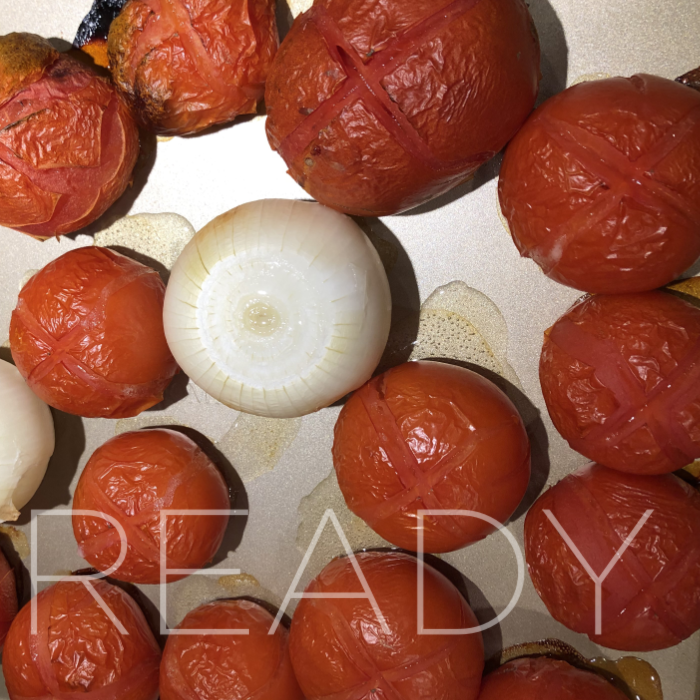
- Using the tongs, gently put the onions and tomatoes into the stock pot. Don’t squeeze too hard! They can squirt hot liquids. If your tomatoes turn to mush when you pick them up, they’re either overcooked, or low supermarket-grade tomatoes. If they implode, don’t worry! Just deal with them in the next step.
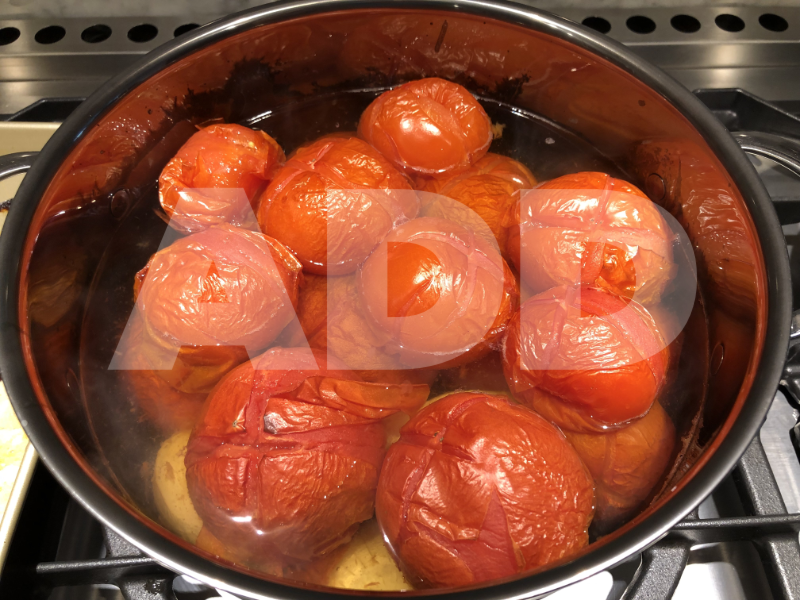
- Using your spatula, scrape off the bottom of the pan. There’s a lot of residual liquid with essential oils from the tomato, onion and the garlic that offer up some HUGE flavor! Don’t wash the goodness away.

- Break up the tomatoes a bit with your spatula. Don’t get carried away, my OCD chefs. We just want to open them up a bit. You’ll be pureéing them later.
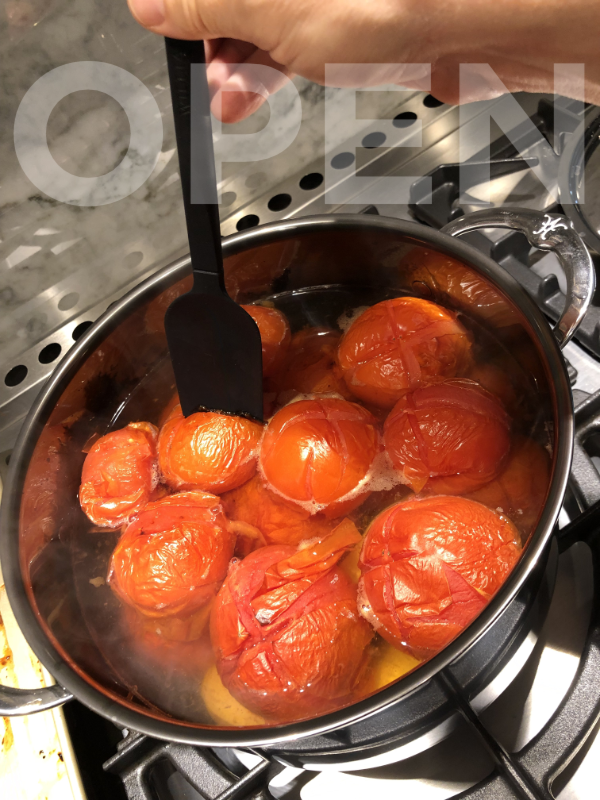
- Drop in the basil, whole. No need to chop (You know that I’m talking to you…). The essential oils find their way in, and we’re pureéing, remember?;
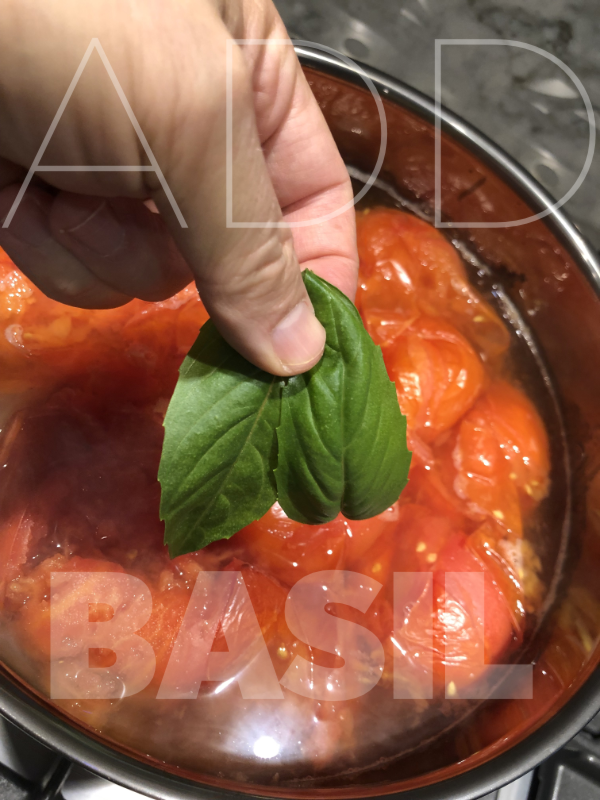
- Set the stockpot to medium, or bring it back to a boil, and simmer.
- Add the salt, dried or fresh thyme, paprika, dried basil, bay leaf and fenugreek leaves. If you use fresh thyme, strip the leaves off of the stems, and discard the stems.
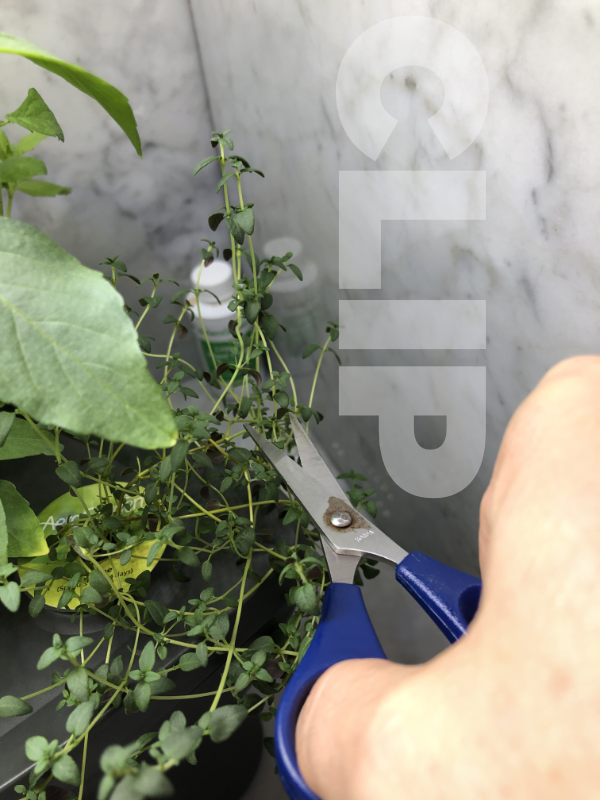
- When it boils, reduce heat, and simmer for ten (10) minutes, breaking it up a bit as you go to get the herbs across the tomatoes. It should look like this:
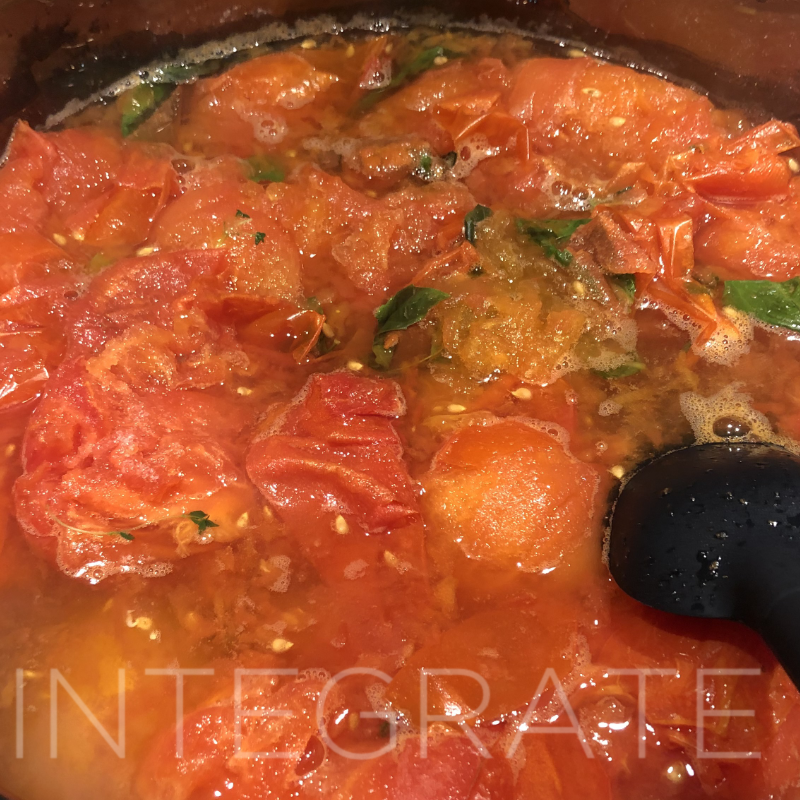
- While simmering, pull out your bread slices, or slice the stale bread. Really any bread will do, but avoid hard-seeded breads, as the seeds make the blend gritty.
- At the end of the first simmer, about five to seven minutes, once all of the tomatoes and herbs are integrated, add the bread to the pot. Push it down into the soup so it saturates.
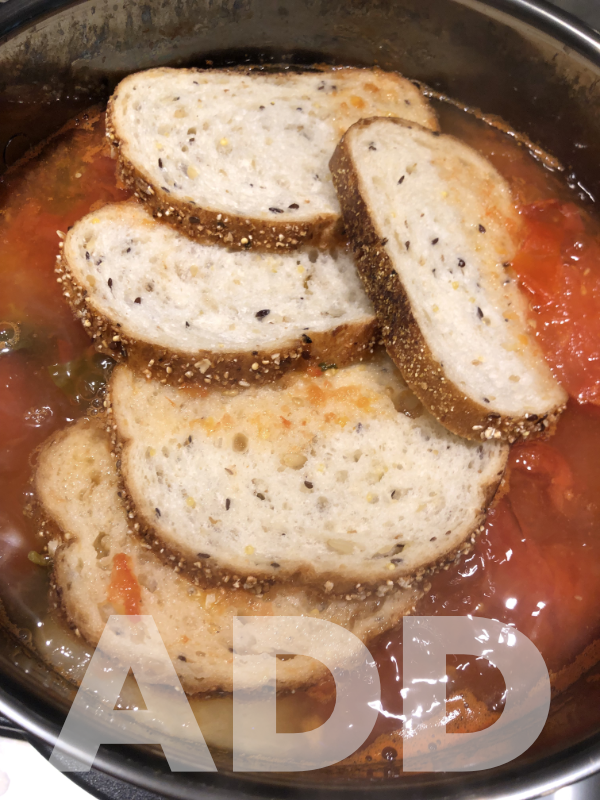
- Simmer another five minutes. It should look like this when it’s ready to blend:
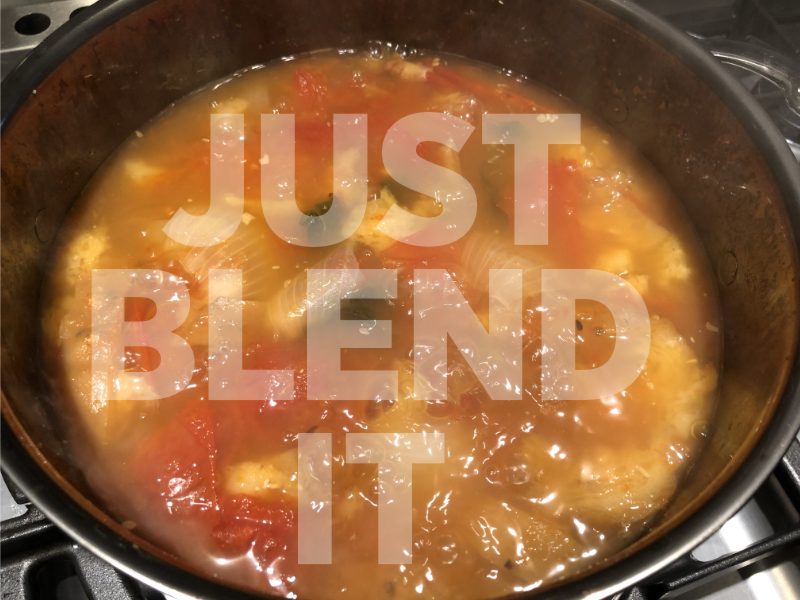
- Turn off the heat.
- Remove the bay leaf.
- See video below:
- Take your immersion blender, and, holding it a bit off of the bottom, begin blending on its normal, or low setting, stopping, and moving around the pan, to break the bigger pieces up. The more even that you can make it, the easier it is to purée.
- Once it’s even, make sure that you are drawing down all of the tomato and onion to be pureéd. If it feels like all of the big pieces are gone, you’re ready to move
- If you use the AllClad immersion blender, it has a “Turbo” feature. Holding firmly, with the blender touching the bottom of the pot in the center, press the Turbo button and hang on! It has a bit of a kick. The soup will puree and look like a more commercial tomato soup.
- If you don’t have a turbo button, keep blending and it will get there.
- If you have a blender, put batches of the soup base into the blender and pureé on a med/high speed.
- Once puréed, add the cream, and blend quickly, as you see in the video. Putting in the cream earlier can change the character of the soup.
- If you like it hot, serve, and garnish with the thyme sprig. If you want to try it cold, prepare the night before, or chill for at least six hours. You’ll taste more of the nuance of the fenugreek leaves, and herbs in the cold version, more of the brightly roasted tomato in the hot. Store, or serve.
